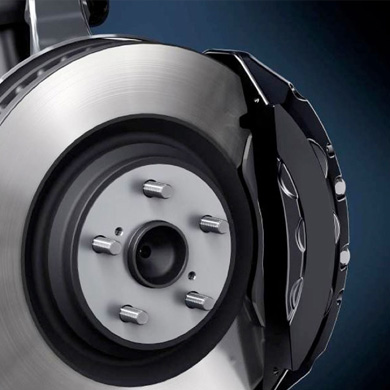Top Signs Your Brake Pads Need Replacing and How to Choose the Right Ones
Your vehicle’s braking system is crucial for ensuring safety on the road. Among the most important components are the brake pads, which are responsible for creating the friction needed to slow down or stop your car. Over time, brake pads wear down and need replacement. Ignoring worn brake pads can compromise your vehicle’s performance and lead to costly repairs. In this blog, we’ll explore the top signs your brake pads need replacing and provide guidance on choosing the right replacement for your vehicle.
Top Signs Your Brake Pads Need Replacing
Understanding the signs of worn brake pads can help you address issues before they become severe. Here are the most common indicators:
- Squeaking or Squealing Noise
One of the first signs of worn brake pads is a high-pitched squealing noise when you apply the brakes. This sound is caused by a wear indicator, a small metal piece built into the brake pads, designed to alert you when they’re nearing the end of their lifespan. - Grinding Sound
If you hear a grinding noise while braking, it’s likely that the brake pads have worn down completely, exposing the metal backing plate. This can damage the rotors and lead to expensive repairs if not addressed immediately. - Reduced Braking Performance
Worn brake pads can result in longer stopping distances and reduced braking efficiency. If your car takes longer to stop or feels less responsive when braking, it’s time to inspect the pads. - Brake Pedal Vibrations
A vibrating brake pedal may indicate that the brake pads are unevenly worn or that the rotors are warped. This issue can affect your ability to brake smoothly and safely. - Dashboard Warning Light
Many modern vehicles have a dashboard warning light that activates when the brake pads are worn. If this light comes on, it’s essential to get your brakes checked promptly. - Visual Inspection
You can often inspect the brake pads through the gaps in your wheels. If they appear less than 6mm thick, it’s time to consider replacing them.

Choosing the Right Brake Pads
Selecting the right brake pads is essential for maintaining optimal braking performance. Here are some factors to consider when choosing replacement brake pads:
- Types of Brake Pads
- Ceramic Brake Pads: Known for their durability, low noise levels, and minimal dust production, ceramic brake pads are an excellent choice for everyday driving. However, they can be more expensive.
- Semi-Metallic Brake Pads: These pads contain a mix of metals and are highly effective in heat dissipation, making them ideal for high-performance or heavy-duty vehicles. They can, however, produce more noise and dust.
- Organic Brake Pads: Made from non-metallic materials, organic pads are quieter and more affordable. However, they tend to wear out faster and may not perform as well under extreme conditions.
- Driving Conditions Your driving habits and conditions play a significant role in determining the best brake pads for your vehicle. For city driving, where frequent stopping is required, ceramic or organic pads may be sufficient. For off-road or high-performance driving, semi-metallic pads are a better choice.
- Compatibility Always ensure that the brake pads you choose are compatible with your vehicle’s make and model. Consult your vehicle’s owner manual or speak with a trusted mechanic for recommendations.
- Quality and Brand Invest in high-quality brake pads from reputable brands. While cheaper options may save money upfront, they often wear out faster and compromise safety. Leading brands like Bosch, Brembo, and Wagner offer reliable brake pads that meet industry standards.
- Budget While it’s important to stick to your budget, avoid compromising on quality. Brake pads are a critical safety component, and investing in reliable options can save you from costly repairs or accidents in the long run.
Steps to Replace Brake Pads
If you’re a DIY enthusiast, replacing brake pads can be a straightforward process. However, if you’re unsure, it’s best to leave it to a professional mechanic. Here are the basic steps:
- Gather Tools and Materials
You’ll need a jack, lug wrench, C-clamp, socket set, and new brake pads. - Lift the Vehicle
Use a jack to lift the car and remove the wheels to access the braking system. - Remove Old Brake Pads
Loosen the caliper bolts, slide the caliper off, and remove the old brake pads. - Inspect and Prepare
Check the rotors for damage and clean the caliper assembly. Use a C-clamp to compress the caliper piston. - Install New Pads
Place the new brake pads into the caliper bracket and reattach the caliper. - Reassemble and Test
Reattach the wheels, lower the car, and test the brakes to ensure they’re functioning properly.
Final Thoughts
Brake pads are a vital part of your vehicle’s safety system. Regular inspections and timely replacements can prevent accidents and costly repairs. Recognising the signs of worn brake pads and choosing the right replacements ensures optimal performance and peace of mind on the road. Whether you opt for ceramic, semi-metallic, or organic pads, prioritise quality and compatibility for the best results. If you’re unsure about the condition of your brake pads or how to replace them, consult a trusted mechanic to keep your vehicle safe and roadworthy.
Comments
Post a Comment